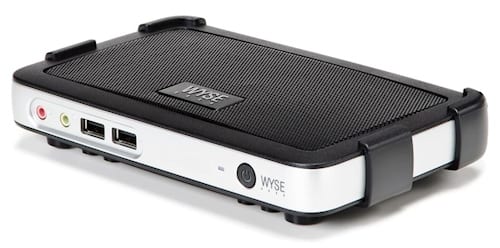We have now selected and ordered the thin client device (small dedicated cloud computer) which will be going into open access areas of the GCW Library in September. It is the latest T10 model from Wyse which boots up in 12 seconds and uses just 7W of power. It has no fans or other moving parts and so is completely silent in operation. We are planning to mount them on the rear of the monitors which will result in a neat and tidy solution which is very space efficient.
VDI
So it begins
Although the blog has been a little quiet once again, work has been continuing in the background and the procurement cogs have continued to turn.
A number of companies submitted responses to our invitation to tender. An evaluation panel reviewed the submissions, shortlisted, attended presentations and after scoring each solution made a recommendation to select a particular supplier, which was then ratified by the project board.
The contract has been awarded to Phoenix IT Services Ltd and work on delivering the solution will now start with a series of low level design workshops.
Now that the competition process is complete, the project board have agreed that this blog can be made publically visible.
Why VDI?
Virtual Desktop Infrastructure (VDI) is an alternative method for delivering desktops to end users. A virtual desktop looks and acts like a traditional PC but, instead of residing locally, all software and data are housed in the University’s central data centres and offered as an “internal cloud” service. The Windows 7 Project will use server hosted desktop technology which offers numerous advantages in terms of cost savings, security, resilience, flexibility and reduced management.
For a comparison of the strengths and weaknesses of traditional PCs vs VDI check out; Why VDI?
